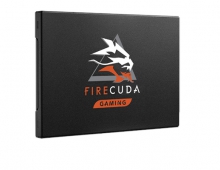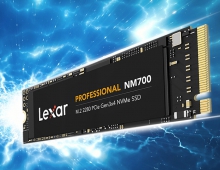
OCZ RD400 NVMe SSD Series Released
The Toshiba OCZ RD400 Non-Volatile Memory Express (NVMe) solid state drive (SSD) series has just been released, designed for storage entusiasts, notebooks and PCs. Unlike Serial Advanced Technology Attachment (SATA) based SSDs utilizing the legacy Advanced Host Controller Interface (AHCI) protocol, NVMe is the first storage protocol designed with SSDs in mind making the RD400 series one of Toshiba’s fastest consumer SSDs to date.
Additionally, the RD400’s PCIe Gen3 x4 lane interface shatters the traditional SATA bottleneck by delivering over four times the performance of SATA SSDs4. The RD400 series features sequential read/write speeds of up to 2,600 MB/s and 1,600 MB/s and random read/write performance of up to 210,000 and 140,000 4KiB input/output operations per second (IOPS).

The RD400 series is targeted at both desktop and notebook users, but the compact M.2 2280 form factor enables ultra-thin notebooks to take advantage of PCIe speeds. Desktop users can still harness the power of the RD400 even if they don’t have an M.2 slot by purchasing the PCIe adaptor card version. Both models will be available in capacities of 128GB, 256GB, 512GB, and 1024GB.

RD400 SSDs feature Toshiba 15nm MLC NAND flash memory and an endurance rating of up to 592TBW. Each drive is backed by a 5-year advanced warranty program.
Specifications
| PERFORMANCE | 128GB | 256GB | 512GB | 1024GB |
|---|---|---|---|---|
| Sequential Read | Up to 2,200 MB/s | Up to 2,600 MB/s | Up to 2,600 MB/s | Up to 2,600 MB/s |
| Sequential Write | Up to 620 MB/s | Up to 1,150 MB/s | Up to 1,600 MB/s | Up to 1,550 MB/s |
| Random Read (4KiB) | Up to 170,000 IOPS | Up to 210,000 IOPS | Up to 190,000 IOPS | Up to 210,000 IOPS |
| Random Write (4KiB) | Up to 110,000 IOPS | Up to 140,000 IOPS | Up to 120,000 IOPS | Up to 130,000 IOPS |
| ENDURANCE | ||||
| TBW (Total Bytes Written) | 74 TB | 148 TB | 296 TB | 592 TB |
| Daily Usage Guidelines | 40 GB/day | 81 GB/day | 162 GB/day | 324 GB/day |
| PHYSICAL | ||
|---|---|---|
| Usable Capacities | 128GB, 256GB, 512GB, 1024GB | |
| Form Factor | M.2 2280, M.2 2280+AIC | |
| Interface | PCI Express Base Specification Revision 3.1 (PCIe) | |
| Maximum Speed | 32 GT/s (PCIe Gen3x4L ) | |
| Command | NVM Express Revision 1.1b (NVMe) | |
| NAND Flash Memory Type | MLC | |
| Dimension (L x W x H) | 128GB, 256GB, 512GB: 80 x 22 x 2.23mm 1024GB: 80 x 22 x 3.58mm AIC: 157.64 x 105.51 x 17.2mm |
|
| Drive Weight | 128GB: 6.8g (typ.) 256GB, 512GB: 7.2g (typ.) 1024GB: 8.6g (typ.) AIC: 63g (typ.) |
|
| POWER REQUIREMENTS | ||
|---|---|---|
| Supply Voltage | 128GB, 256GB, 512GB, 1024GB: 3.3V +/- 5% AIC: 12V +/- 5% |
|
| Power Consumption (Active) | 128GB, 256GB, 512GB: 6.0W (typ.) 1024GB and AIC: 6.4W (typ.) |
|
| Power Consumption (Power State 5) | 128GB, 256GB, 512GB, 1024GB and AIC: 6.0 mW (typ.) | |
| RELIABILITY / SECURITY | |
|---|---|
| MTTF> | 1.5Mhours |
| Product Health Monitoring | Self-Monitoring, Analysis and Reporting Technology (SMART) Support |
| COMPATIBILITY | |
|---|---|
| PCI Express | Compatible with PCI Express Base Specification Revision 3.1 |
| Operating System | Windows 10, Windows 8.1, Windows7 Linux Fedora 21, Mint 17.1, ElementaryOS Freya, OpenSUSE 13.2, Ubuntu 14.04, Ubuntu 14.10 MacOS X10.9, 10.10, 10.11 |
| Connector Type | M.2: M.2 M key socket AIC: PCIe slot |
| Targeted Applications | Client workstations and laptops |
| ADDITIONAL FEATURES | |
|---|---|
| Performance Optimization | TRIM, Idle Time Garbage Collection |
| Service & Support | 5-YearAdvanced Warranty Program, Toll-Free Tech Support |
| Software | SSD management software: SSD Utility and Command Line Online Update Tool (CLOUT) |





















